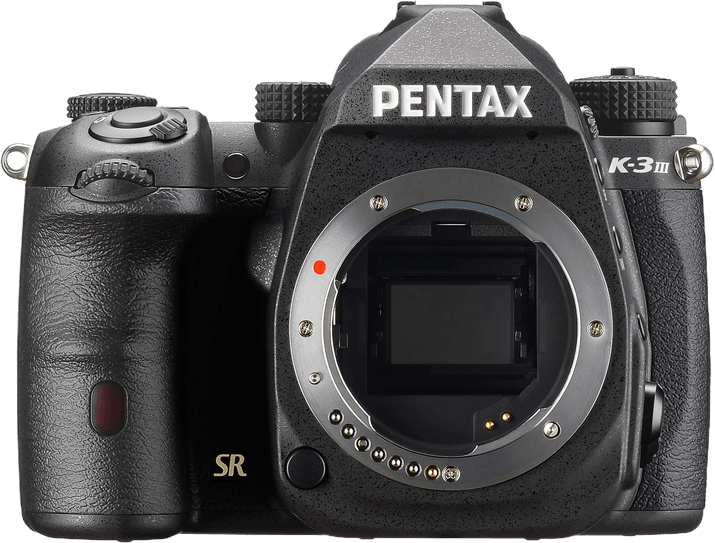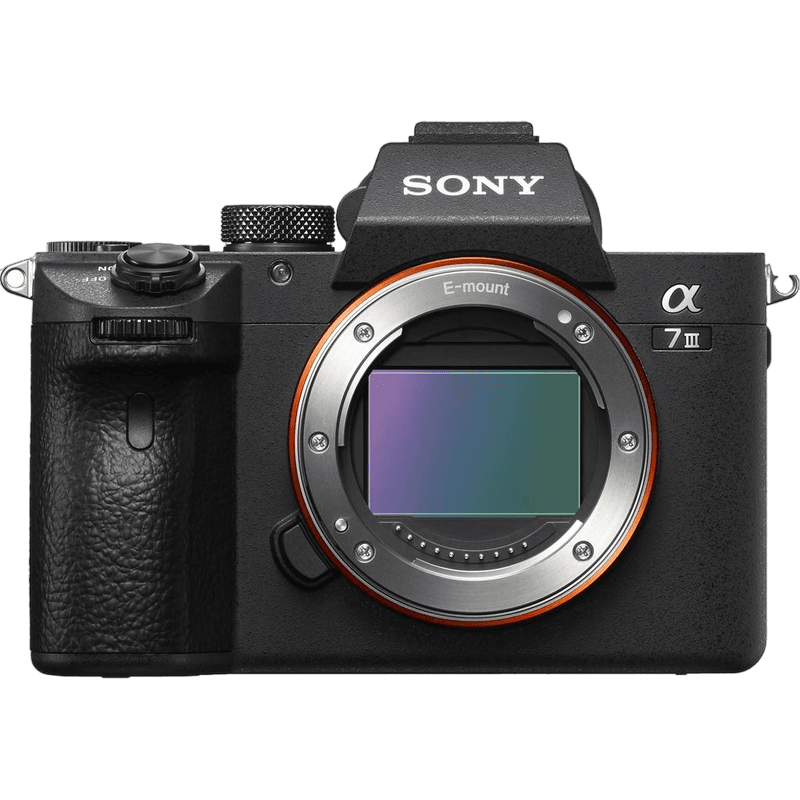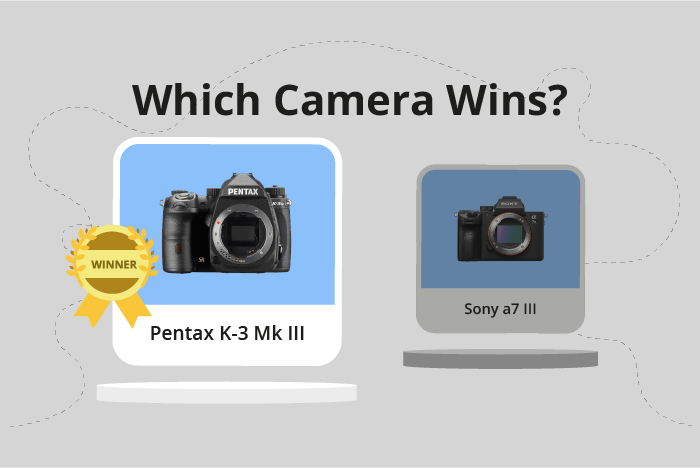Pentax K-3 Mark III vs Sony a7 III Comparison
Pentax K-3 Mark III

Sony a7 III

The Pentax K-3 Mark III outperforms the Sony a7 III with a score of 83 compared to 81. Both cameras were released at a similar price point, with the Pentax K-3 Mark III launching at $1999 in 2021 and the Sony a7 III at $2000 in 2018. They share the same depth of 74mm, but the Pentax K-3 Mark III is larger in size, measuring 135 x 104mm, and weighs more at 820g.
The Pentax K-3 Mark III’s higher score highlights its advantages as a DSLR, providing better image quality and performance. On the other hand, the Sony a7 III has its merits as a mirrorless camera, offering a lighter and more compact design at 650g and 127 x 96mm dimensions.
Taking the scores and specifications into consideration, the Pentax K-3 Mark III is the better option for photographers seeking superior performance and image quality. However, the Sony a7 III is a suitable alternative for those prioritizing portability and a more compact design.
Pentax K-3 Mark III vs Sony a7 III Overview and Optics
The Pentax K-3 Mark III narrowly wins in optics with a score of 82/100, compared to the Sony a7 III’s score of 81/100. Both cameras share several specifications, including a CMOS sensor, image stabilization, and a DXOMARK sensor score of 96.
The Pentax K-3 Mark III has a higher megapixel count at 26, compared to the Sony a7 III’s 24.2. This results in the Pentax capturing more detailed images. Additionally, the Pentax K-3 Mark III has a faster shooting speed of 12 frames per second, compared to the Sony a7 III’s 10 frames per second. This allows the Pentax to capture fast-moving subjects with greater ease. The Pentax also features a Prime IV processor and KAF2 lens mount, offering compatibility with a wide range of Pentax lenses.
On the other hand, the Sony a7 III has a full-frame sensor size, which provides better low-light performance and a shallower depth of field compared to the Pentax K-3 Mark III’s APS-C sensor. The Sony a7 III also features a Bionz X processor and an FE lens mount, making it compatible with a variety of Sony lenses.
Considering the optics of both cameras, the Pentax K-3 Mark III stands out with its higher megapixel count and faster shooting speed. However, the Sony a7 III offers a full-frame sensor, which may appeal to photographers who prioritize low-light performance and depth of field. Ultimately, the choice between these two cameras will depend on individual preferences and shooting requirements.
Pentax K-3 Mark III vs Sony a7 III Video Performance
The Pentax K-3 Mark III outperforms the Sony a7 III in video capabilities, scoring 83/100 compared to the Sony a7 III’s 70. Both cameras share some common specifications, including a maximum video resolution of 4K and video dimensions of 3840 x 2160. However, the Pentax K-3 Mark III excels in certain areas, while the Sony a7 III has its own advantages.
The Pentax K-3 Mark III boasts a higher maximum video frame rate of 60fps, double that of the Sony a7 III’s 30fps. This allows for smoother and more fluid motion capture in video recordings.
On the other hand, the Sony a7 III does not have any significant advantages in video capabilities over the Pentax K-3 Mark III. It shares the same 4K resolution and video dimensions but falls short in frame rate and time-lapse features.
Considering the differences in video capabilities, the Pentax K-3 Mark III stands out as the superior choice for videographers and enthusiasts seeking higher frame rates and built-in time-lapse functionality. The Sony a7 III, while still a capable camera, may not be the ideal choice for those prioritizing video performance.
Pentax K-3 Mark III vs Sony a7 III Features and Benefits
The Pentax K-3 Mark III wins the feature comparison with a score of 87/100, while the Sony a7 III scores 81/100. Both cameras share some common specifications, such as touchscreen capabilities, Wi-Fi, and Bluetooth connectivity. Neither camera has GPS functionality.
The Pentax K-3 Mark III outperforms the Sony a7 III in terms of screen size and resolution. With a 3.2-inch screen and a resolution of 1,620,000 dots, the Pentax K-3 Mark III provides a larger and sharper display for users. This contributes to a better user experience when reviewing images and navigating the camera’s menus.
The Sony a7 III, on the other hand, offers a flip screen, which the Pentax K-3 Mark III lacks. This feature makes it easier for photographers to capture images from various angles and positions. The flip screen also comes in handy for vlogging and self-portraits. However, the Sony a7 III’s screen is smaller at 3 inches and has a lower resolution of 921,600 dots, compared to the Pentax K-3 Mark III.
Considering these points, the Pentax K-3 Mark III is the superior camera when it comes to screen size and resolution, providing a better overall user experience. The Sony a7 III’s flip screen is a useful feature for certain shooting situations, but its smaller size and lower resolution make it less appealing compared to the Pentax K-3 Mark III. Ultimately, the choice between the two cameras depends on the individual needs and preferences of the photographer.
Pentax K-3 Mark III vs Sony a7 III Storage and Battery
The Pentax K-3 Mark III and the Sony a7 III perform highly in storage and battery. Both cameras possess two memory card slots and accept SD/SDHC/SDXC cards. However, the Sony a7 III also accepts Memory Stick Duo/Pro Duo/Pro-HG Duo cards.
The Pentax K-3 Mark III offers superior battery life, providing 800 shots per charge with its D-LI90 battery type. The Sony a7 III falls slightly behind with 750 shots per charge using the NP-FZ100 battery. Both models support USB charging.
Alternatives to the Pentax K-3 Mark III and Sony a7 III
Are you still undecided about which camera is right for you? Have a look at these popular comparisons that feature the Pentax K-3 Mark III or the Sony a7 III:

